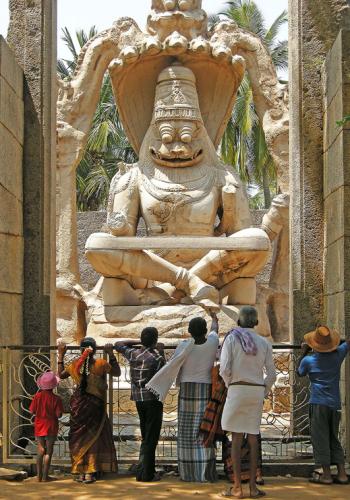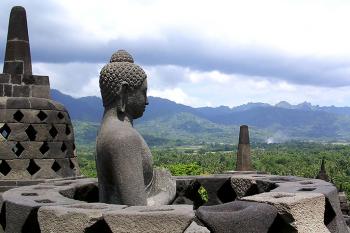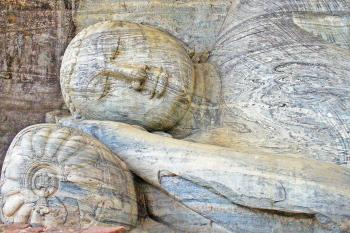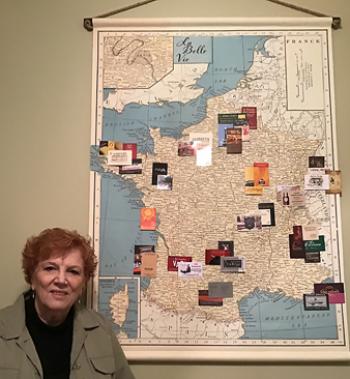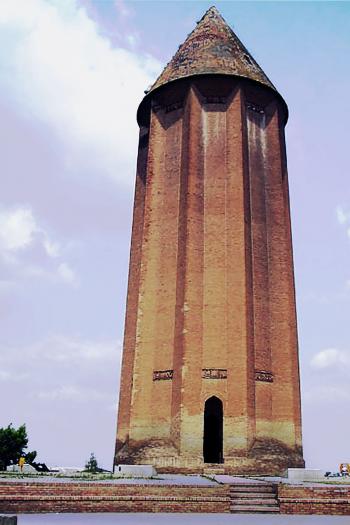‘Experience’ collections
Patrica McKevlin of Charleston, South Carolina, wrote, “In 2018 I finished viewing all of Johannes Vermeer’s paintings, which I was introduced to in the sixth or seventh grade! It was a difficult challenge, but I had wanted to do it for a very long time. I know some travelers who are counting countries, while others are aiming to visit all the capitals of Europe. I would like to hear what types of experiences other people are ‘collecting’.”
Another ITN subscriber (from Iowa) wrote, “On my next trip to India, among other things, I will ‘get’ my 26th and 27th of the 27 principal hill stations of British India [from the Dane Kennedy list] for my ‘collection.’ I know people who ‘collect’ wineries or visits with different tribal cultural groups, and I’ve crossed paths with people focused on narrow-gauge railroads or golf courses. I’m wondering what other experiences travelers ‘collect’.”
Consequently, we asked ITN subscribers to each write in about any particular type of experience that they seek out, “collect” or hope to complete as a goal. The responses below comprise the second installment in a 4-part series.
The purpose of my travel has evolved over time as I’ve become more comfortable going to remote areas. At first, I traveled to the “usual” places (Paris, Rome, London, etc.), and, of course, they were spectacular. Now my goal is to “collect” the greatest wonders our planet has to offer.
The notion of “greatest wonders” is obviously subjective. What is wonderful to one person may not be wonderful to the next. But, to me, it has meant seeing inexpressible beauty, like Antarctica; the Taj Mahal; the Ilullisat icefjord in Greenland; Australia’s Great Barrier Reef; Meteora, Greece; the Sossusvlei dunes in Namibia; Michelangelo’s “Pietà”; the Ajanta and Ellora caves in India; Petra, Jordan; the lamassu monumental sculptures in the Baghdad National Museum, and the interior of the Sheikh Lotfollah Mosque in Isfahan, Iran.
It has also meant participating in astounding experiences, like climbing to the top of Egypt’s Mount Sinai with Bedouins under a full moon; pushing up to the Batu Caves surrounded by millions of Hindu worshipers during the Thaipusam Festival in Malaysia; driving a dogsled through deep, fresh snow in northernmost Norway and witnessing the northern lights; contemplating the perfection of a rainbow arching over Machu Picchu in Peru; eyeing monks debating theological points in Tibet, and staring transfixed at holy men performing ceremonies with burning oil lamps along the ghats of Varanasi, India.
Certainly, my goal of seeing and/or participating in the most amazing things the world has to offer continues to guide my travel choices. And why not? After all, places and experiences that are considered to be the greatest usually are.
When I succeed in seeing or participating in a “greatest,” I come back home a different person, quite overwhelmed and nearly in a state of shock or, at least, utter joy.
Egypt is an excellent example. I’m a “tomb freak,” as Dr. Bob Brier once called me (his lectures on the history of Ancient Egypt are part of the Great Courses offered by The Teaching Company [www.thegreatcourses.com]), so I went to Luxor’s west bank for the sole purpose of seeing the 55 tombs of Ancient Egypt open to the public there (see ITN, April ’19, pg. 6).
On the very first day of that trip, after fulfilling a lifelong dream of seeing the mind-boggling tombs of Queen Nefertari and Pharaoh Seti I, I chanced to meet Dr. Zahi Hawass (former head of Egypt’s Supreme Council on Antiquities and the face of Ancient Egypt to foreigners). He invited me to ride in his car with him to the Valley of the Kings and to attend a TV interview he was giving next to the tomb of King Tutankamun. Afterward, I was allowed to visit Tutankhamun’s tomb by myself for half an hour and to take photos.
Being able to see, in a single day, the most beautiful of all the ancient tombs (Nefertari’s), one of the largest and most elaborate of the pharaohs’ tombs (Seti I’s) and the most famous tomb in the Valley of the Kings (Tutankhamen’s) — and to “hang out” with Dr. Hawass — certainly left me shaking my head in disbelief at my good fortune.
Related to my goal of seeing/experiencing the “greatest,” in October 2019 I was part of the first American tour group to receive permission to visit Syria since the war began there in 2011. Almost as soon as I exited our bus in Old Damascus, a woman in full chador approached me and asked where I was from. When I answered “USA,” she hugged me and kissed me and welcomed me to her country.
Our group then visited the magnificent and graceful Umayyad Mosque (dating to the 7th century), which included the most elegant and exquisite mosque courtyard I have ever seen anywhere, with a superb, gilded-tile mosaic from around AD 710 depicting Paradise. Once again, seeing (and experiencing) the “greatest” truly changed my life.
Laurel Glassman
Chevy Chase, MD
UNESCO World Heritage Sites (whc.unesco.org/en/list) are invariably among the most awe-inspiring, worthwhile and memorable locations in the world. Because they are highly recommended by the world’s foremost organization concerned with historic preservation, the sites constitute, for me, locations I should collect. So far, I’ve visited 197 sites (out of a total of 1,121) in 49 countries.
I’ve become someone who carefully reads itineraries of preplanned tours to ascertain what UNESCO Sites are included, endeavoring to visit as many as possible, especially when arranging custom trips. In this way, due to careful planning, in October 2010 I visited all but one of Sri Lanka’s eight UNESCO Sites.
I’ve also often requested special extensions to trips and have planned entire trips just to visit a particular site. By special request, Hampi was added to my trip to the south of India in March 2015.
A trip to Indonesia in April 2005 was specifically planned to see the world’s largest Buddhist monument, Java’s Borobudur, and its enormous pyramidal mandala (sacred diagram) leading pilgrims on the path to nirvana.
A trip to Chile in January 2009 was planned to visit the world’s most remote inhabited location, Rapa Nui (Easter Island). I still regard the island, with its monolithic figures, the moai, as one of the world’s most mysterious sites, its many secrets never to be fully known.
On a trip to Iran in April-May 2014, I took a special extension to visit the enigmatic Gonbad-e Qābus (Dome of Qābus) tower in the country’s northeastern corner (Feb. ’17, pg. 26).
A trip to China’s western province of Xinjiang in April-May 2016 was primarily to visit the site of the hundreds of Buddhist cave temples at the Magao Caves, near Dunhuang.
In 2019, UNESCO added to its list sites I’d previously visited, including Jaipur in Rajasthan, India (May 2004); Bagan, Myanmar (visited in December 2005); the Khan’s Palace in Sheki, Azerbaijan (September 2011), and the Plain of Jars in Laos (December 2009). The huge, empty, monolithic jars scattered over the vast Laotian plains are another of Earth’s unsolved mysteries.
If you add UNESCO Sites to your trips, you, too, may find them among your most memorable trip highlights.
David J. Patten
Saint Petersburg, FL
As I grew up, I was thrilled by the archaeological sites of central Mexico. On my first trip to Europe, I chose to visit Athens and Rome, with a side trip to Egypt. And for our honeymoon, my wife, Mary, and I decided on the Yucatán Peninsula. Wherever we went thereafter, we sought out archaeological sites, which have constituted a driving force for our travels.
In the beginning, we had a mental list, to some extent inspired by Dame Rose Macaulay’s “Pleasure of Ruins” [out of print in the US — Editor], but we kept adding to it. On our list of essential sites, we have now visited 45, but many not on the list are just as interesting and fun to visit.
Many of the sites we visited are no longer open to the public (Altamira, Lascaux, Chauvet). Access to others has been seriously limited (no walking in Stonehenge, no more climbing the Great Pyramid of Giza or many of the Mayan pyramids). And some have been plastered over and have lost their romance (Knossos in Crete).
Here is our list, and I’m sure we will add more:
In North America, we’ve visited Teotihuacán, Monte Albán, Chichén Itzá, Uxmal, El Mirador, Copán, Tikal and Palenque.
In South America, Machu Picchu and Easter Island.
In Europe, Stonehenge, Altamira Cave, Lascaux, Chauvet Cave, Rome, Pompeii, Villa Romana del Casale, Athens and Knossos.
In Africa, Giza, Abu Simbel, Luxor, Djémila, Timgad, Meroë and Lalibela.
In Southwest Asia, Ephesus, Pergamon, Nimrud, Palmyra, Ba’albek, Masada, Jerusalem, Persepolis and Petra.
In South Asia, Khajuraho, Hampi and Sigiriya.
In East Asia, Dunhuang, Xi’an and the Great Wall.
In Southeast Asia, Angkor Wat, Pagan (Bagan), Mrauk U, Borobudur and Prambanan.
Joseph B. Lambert
San Antonio, TX
Our collection started in 2005 with a visit that my wife, Jan, and I made to a small bistro in Paris for lunch, le Petit Vendome (8 rue des Capucines; phone +33 14 261 0588, lepetitvendome.fr [in French only]), just south of the Opera.
The restaurant was packed, and we ended up being shoehorned in between businessmen. Everyone was sitting so close to each other that you had to get up and move your table out of the way so your neighbor could either sit down or get out!
Between conversations with our new friends on menu recommendations and clarifications (like “What is Christmas sausage?”), being overwhelmingly welcomed by the couple who owned the bistro and enjoying the great food, we wanted to find a way to remember this place. The easy solution was keeping their very distinctive business card.
From then on, Jan and I started collecting business cards of all the restaurants in France that we wanted to remember. We keep those memories fresh by displaying the cards on a map of France hung on a wall of our den.
At least one of us can tell a story about either the food, the staff, the local patrons or some other experience for each card on the map. It’s a great way to remind us of one of the main reasons we travel.
Ron Linkenback
Cary, NC

